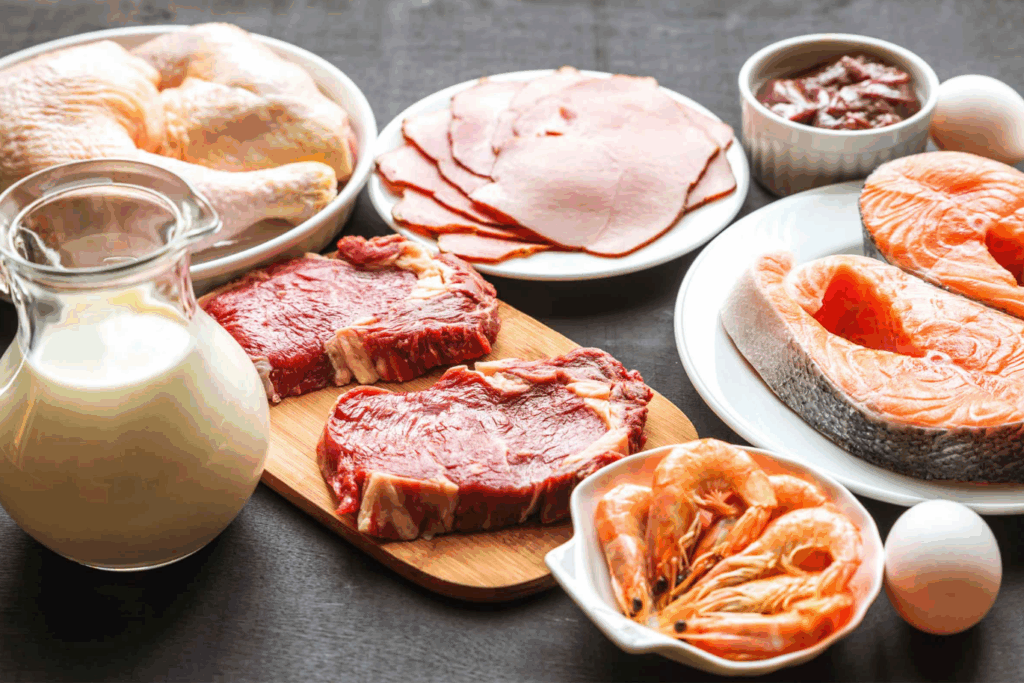
Lost Muscle After 60? These Surprising Tips Help You Get It Back Naturally
Rebuilding Muscle After 60: A Simple Guide to Regaining Strength Naturally
As we grow older, staying active and strong can start to feel like an uphill climb—especially if you’ve noticed your muscle strength slipping after the age of 60. But here’s the encouraging news: it’s absolutely possible to rebuild muscle naturally, without extreme routines or complicated plans. With a few science-backed strategies, you can bring strength and vitality back into your everyday life. Whether your goal is to carry groceries without strain, play with your grandkids, or simply move with more confidence, this guide will help you get there.
Why Muscle Loss Happens After 60
Aging brings many changes to the body, and one of the most common is sarcopenia—the gradual loss of muscle mass. According to the National Institute on Aging, adults lose around 3–5% of muscle mass per decade after age 30, with this rate accelerating once you pass 60.
Several key factors contribute to this process:
-
Reduced Physical Activity: Less movement means less stimulation for muscles to maintain strength.
-
Hormonal Changes: Decreasing levels of hormones like testosterone and growth hormone can reduce muscle-building potential.
-
Nutritional Deficiencies: Insufficient protein or calories in the diet can prevent proper muscle maintenance and growth.
-
Chronic Conditions: Issues such as arthritis, diabetes, or heart disease can limit mobility and reduce activity levels.
Understanding these changes is empowering—once you know why muscle loss happens, you can take effective steps to counter it.
Boost Your Strength with Simple Exercises
Exercise is the most powerful tool for rebuilding muscle at any age. In fact, studies from Harvard Health show that regular strength training significantly improves muscle mass, balance, and coordination in older adults.
The great news? You don’t need a gym membership or heavy weights. Many strength-building exercises can be done at home with minimal equipment and time.
Best Exercises to Build Muscle After 60
-
Bodyweight Moves: Try chair squats, wall push-ups, and seated leg lifts. These support functional strength and can be modified for any fitness level.
-
Resistance Bands: These lightweight, joint-friendly tools are ideal for upper and lower body workouts at home.
-
Brisk Walking: Walking with intention, especially uphill or in short bursts, activates leg muscles and boosts cardiovascular health.
-
Balance Training: Standing on one foot or walking heel-to-toe improves stability, reducing the risk of falls.
-
Light Dumbbells or Household Items: Lifting small weights (even water bottles) helps build arm and shoulder strength.
🕒 Pro Tip: Aim for 2–3 strength sessions per week, lasting 20–30 minutes. Begin slowly, and always talk to your doctor if you have pre-existing health concerns.
Explore local senior centers, YouTube workouts designed for older adults, or virtual fitness groups to find guidance and accountability. Exercise with a friend or family member—it makes the journey more fun and sustainable.
Fuel Your Muscles with the Right Nutrition
What you eat directly affects how well your muscles can grow and repair. As we age, our bodies become less efficient at processing protein, which means we may need more protein, not less, to support muscle health.
According to the Mayo Clinic, eating the right foods can significantly support muscle recovery and strength development.
Top Muscle-Friendly Foods
-
Lean Proteins: Chicken, turkey, eggs, tofu, legumes, or fish (aim for 0.5–0.7 grams of protein per pound of body weight daily).
-
Greek Yogurt: High in protein and rich in gut-friendly probiotics.
-
Whole Grains: Brown rice, quinoa, oats, and whole wheat provide sustained energy for workouts and recovery.
-
Fruits and Vegetables: Spinach, berries, sweet potatoes, and broccoli are packed with vitamins, minerals, and antioxidants to fight inflammation.
-
Healthy Fats: Avocados, nuts, and olive oil support hormone function and energy levels.
💡 Quick Tip: Distribute protein evenly throughout the day—don’t save it all for dinner. Include a protein source at every meal for better absorption.
Hydration also matters. Drinking enough water (around 6–8 cups daily) helps transport nutrients and aids in recovery. Consider speaking with a dietitian if you're unsure how to balance your meals.
Prioritize Rest and Recovery
It’s easy to overlook rest when focusing on rebuilding strength—but muscle repair actually happens during recovery, not during the workout itself. Sleep is especially vital: adults over 60 should aim for 7–9 hours of quality sleep per night, according to the CDC.
How to Improve Recovery and Sleep Quality
-
Stick to a Routine: Go to bed and wake up at the same time each day.
-
Create a Sleep-Friendly Environment: Keep your room cool, dark, and quiet. Consider blackout curtains and white noise machines.
-
Limit Electronics: Avoid screens at least an hour before bed to encourage melatonin production.
-
Stretch Before Bed: Light stretching or yoga can relax the body and reduce next-day soreness.
⏳ Don’t train the same muscle groups on back-to-back days. Give at least 48 hours between sessions to allow full recovery.
Build Momentum with Small, Consistent Habits
You don’t need a massive overhaul to make progress. Small, consistent actions lead to long-term results. A study in the Journal of Aging and Physical Activity found that older adults who stuck with moderate exercise and nutrition changes gained significant strength over time.
Easy Habits to Start Now
-
Set a Mini Goal: 10 minutes of movement per day can make a difference.
-
Keep a Log: Track your exercise and meals in a journal or app.
-
Workout Buddy: Find a friend to walk with, stretch with, or join a class.
-
Celebrate Milestones: Reward yourself when you hit a goal, like walking farther or lifting heavier.
These habits might seem small—but over weeks and months, they can transform your strength and confidence.
Tackle Common Challenges
Many people over 60 face real challenges when trying to stay active—joint pain, low motivation, or a busy schedule. The good news? Most obstacles can be overcome with simple solutions.
Practical Tips to Stay on Track
-
Joint Pain: Choose low-impact workouts like swimming, tai chi, or chair yoga. Consult a physical therapist for tailored exercises.
-
Low Energy: Eat a small snack—like a banana with almond butter—30 minutes before exercise for a gentle energy boost.
-
Lack of Time: Break workouts into three 10-minute sessions throughout the day.
-
Feeling Intimidated: Start slow with beginner-friendly movements. Progress at your own pace and be proud of every step forward.
If you’re managing a chronic condition, such as arthritis or heart disease, talk with your healthcare provider about safe options to stay active.
Embrace a Positive Mindset
Your attitude matters just as much as your actions. Research from Frontiers in Aging Neuroscience shows that older adults with a positive view of aging are more likely to stick with exercise routines and stay healthier over time.
Mindset Boosters to Keep You Motivated
-
Set Meaningful Goals: Aim to lift your grandchild, garden longer, or take the stairs without stopping.
-
Visualize Progress: Picture yourself doing something you enjoy with ease and strength.
-
Join a Community: Surround yourself with others working on their health journey—whether online or in-person.
-
Practice Gratitude: Each day, reflect on one thing your body allowed you to do.
Staying positive doesn’t mean ignoring challenges—it means choosing to focus on growth, resilience, and possibility.
Final Thoughts: Your Stronger Future Starts Today
Rebuilding muscle after 60 is not only achievable—it’s life-changing. With simple, sustainable steps—like regular exercise, nutritious meals, quality rest, and a supportive mindset—you can feel stronger, move easier, and enjoy life more fully.
You don’t need to do it all at once. Start with one or two tips from this guide and build from there. Over time, those small efforts will add up to major results.
💪 Ready to begin? Share this guide with a friend, lace up your sneakers, and take your first step toward a stronger, more active you.
News in the same category


The Stonebreaker Plant (Phyllanthus niruri): Nature’s Natural Remedy for Liver and Kidney Health

Can Guava Leaves Help with Gray Hair and Hair Growth? Exploring Natural Solutions

The Powerful Trio of Lemon, Apple, and Ginger: A Simple Blend That May Support Skin, Hair, and Vision

Drink Cloves and Cinnamon Before Bed? The Results May Surprise You

Hair Thinning? Try This Unique Combo to Support Hair Growth Naturally

The Ultimate Drink for Women’s Wellness: Watermelon Juice with Carrot, Beetroot, and Ginger

THIS HEALS YOUR THYROID IN JUST 3 DAYS! | Barbara O'Neill’s Clove Soak Formula

8 Herbal Teas That Lower Blood Pressure and Unclog Arteries (Doctors Never Say This!)

15 Powerful Foods to Relieve Acid Reflux Fast – The Ultimate Anti-Acidity Diet Guide

Health Benefits of Cayenne Pepper: 20 Surprising Wellness Secrets

DIY Brow Boosting Serum: Your 5-Minute Secret to Fuller, Bolder Brows

Olive Oil, Lemon, and Honey: Natural Benefits for Health and Wellness

Morning Drinks to Support Healthy Aging and Wellness

The Hidden Risks of Datura: A Beautiful Plant with Serious Health Dangers

Say Goodbye to Cancer and Vision Problems with This Powerful Homemade Remedy

The Smoothie Every Woman Over 30 Needs: Almond, Banana, and Avocado Smoothie with Honey 🍌🥑🍯

15 Natural Ingredients That Turn Gray Hair Black Again — Even at 65! Promote Fast Hair Growth Naturally

Discover the Health Benefits of Avocado and Parsley: A Nutrient-Packed Duo
News Post

20 subtle cancer symptoms commonly missed

Experts Say 3 Major U.S. Regions Face Risk of Tsunamis and Flooding

Heartbreaking Voice Message From Pilot Before Crash Goes Viral — Here’s What He Said

Air India crash simulation reveals how sole survivor escaped death

Mango Leaf and Clove Tea: A Gentle Herbal Support for Daily Wellness

The Stonebreaker Plant (Phyllanthus niruri): Nature’s Natural Remedy for Liver and Kidney Health

Can Guava Leaves Help with Gray Hair and Hair Growth? Exploring Natural Solutions

Increased Screen Exposure In Kids Linked to Anxiety, Aggression, and Self-Esteem Issues, Study Says

Researcher Studies Over 200 Kids—Here’s What the Most Emotionally Intelligent Ones Had in Common

Scientists Bioengineer Tooth That ‘Grows’ in Place Like a Natural One And Feels Real

Why There’s a Growing Trend of Straight Men Dating Trans Women

9-year-old dies after dental procedure

Air India pilot’s terrifying last words have been made public

Why You Should Avoid Seat 11A on Your Next Flight – Here’s What You Didn’t Know

Man Releases Chilling Never Seen Before Footage of Twin Tower Collapse

Masterful Painting Of Jesus By 8-Year-Old—Says She Saw The True Face Of Jesus

The Powerful Trio of Lemon, Apple, and Ginger: A Simple Blend That May Support Skin, Hair, and Vision

Drink Cloves and Cinnamon Before Bed? The Results May Surprise You

Hair Thinning? Try This Unique Combo to Support Hair Growth Naturally
